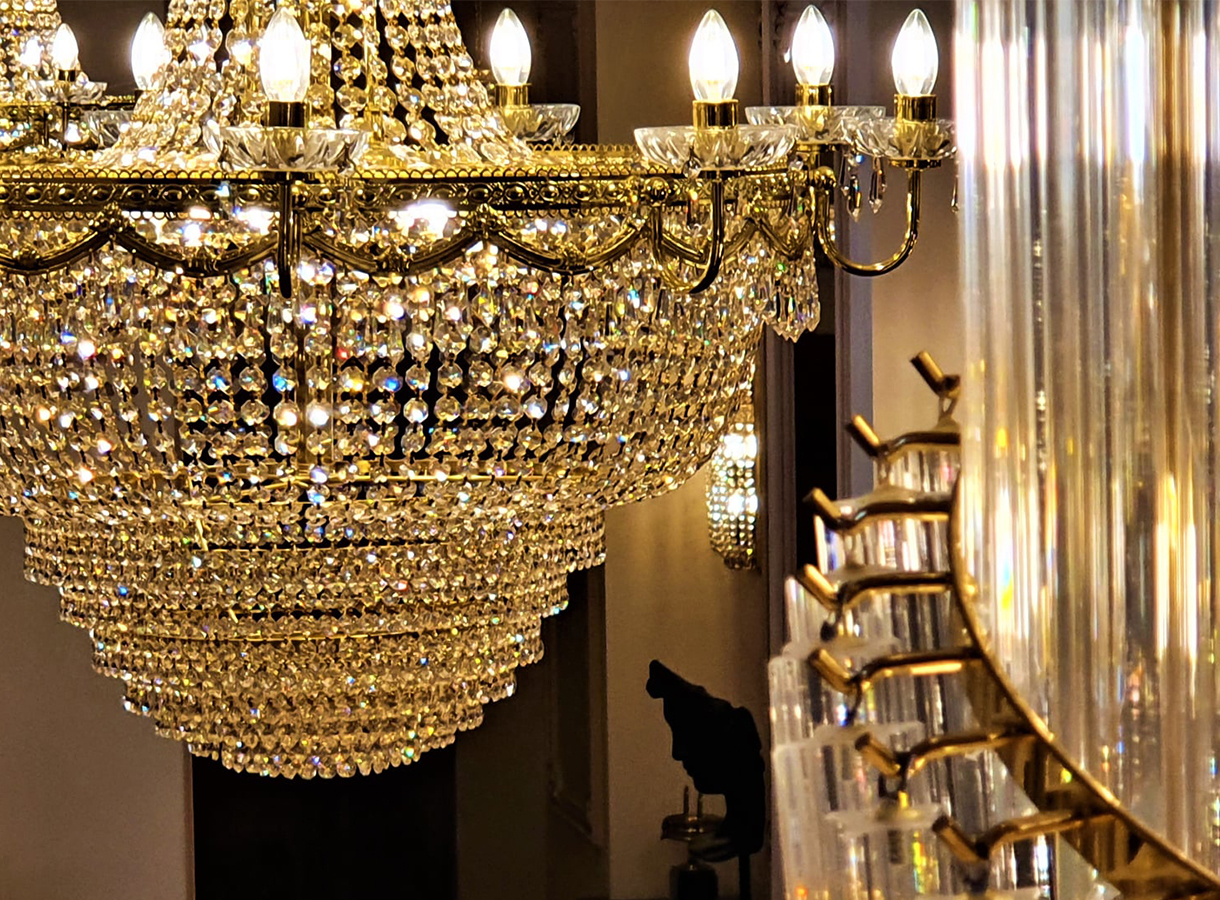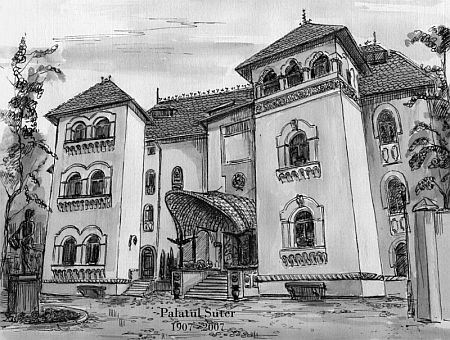 With a fabulous history spanning almost 120 years, the Suter Palace building hosting today SUTER PALACE Heritage Boutique Hotel is considered by visitors, guests or residents a true architectural gem that has faced time and age, to remind us of the huge treasure represented by the heritage of the Romanian capital. And also to carry on a sensational love story between a Swiss man and the city that hosted him, and it still honors his name till today.
With a fabulous history spanning almost 120 years, the Suter Palace building hosting today SUTER PALACE Heritage Boutique Hotel is considered by visitors, guests or residents a true architectural gem that has faced time and age, to remind us of the huge treasure represented by the heritage of the Romanian capital. And also to carry on a sensational love story between a Swiss man and the city that hosted him, and it still honors his name till today.
The Suter Palace has passed the test of time through the care of two Romanian families who transformed the building into the most spectacular 5-star hotel in Romania, a hotel as you can find only in fairy tales, carrying the legacy of elegance and refinement of past times, full of brilliance and effervescence, cosmopolitan and present in the life of the city. A world we are trying to recreate today in our story.
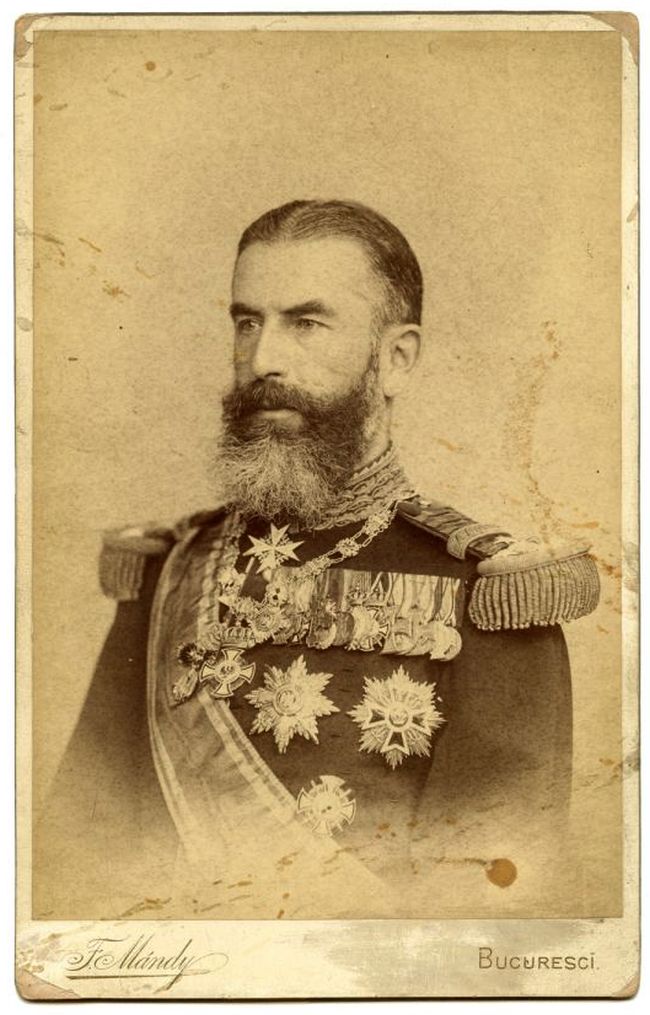 At the end of the 19th century, in 1890, King Carol I decided to improve the area near Metropolia – The Romanian Metropolitan Church and his plans particularize the rehabilitation of the swamps around Filaret Hill and what was known since 1848 as Campul Libertatii, the systematization of neighborhood and the arrangement of the future park that was imagined to host the Romanian General Exhibition. The exhibition was to become a large-scale event with international resonance, being dedicated to the celebration of the King’s 40th anniversary of his reign and 25 years since the coronation and showing to the world, the economic, social and cultural achievements, along with the great military and political successes, reach under the King's leadership.
At the end of the 19th century, in 1890, King Carol I decided to improve the area near Metropolia – The Romanian Metropolitan Church and his plans particularize the rehabilitation of the swamps around Filaret Hill and what was known since 1848 as Campul Libertatii, the systematization of neighborhood and the arrangement of the future park that was imagined to host the Romanian General Exhibition. The exhibition was to become a large-scale event with international resonance, being dedicated to the celebration of the King’s 40th anniversary of his reign and 25 years since the coronation and showing to the world, the economic, social and cultural achievements, along with the great military and political successes, reach under the King's leadership.
For this commanding work, King Carol I invited to Bucharest two of his friends, Swiss architects: Édouard Redont (landscape architect who also will coordinate the landscaping of the future exhibition) and Gustav Adolf Suter who was assigned the systematization and construction in the area.
Originally from Bale-Campagne - a canton in northwestern Switzerland, Gustav Suter fell in love with the vine-clad peaks of the Metropolitan Church of Bucharest on Filaret Hill and bought an domaine, becoming its owner in 1892.
Between 1900 and 1906 took place the landscaping works of Carol Park and the entire surrounding area for the great General Exhibition of Romania and on June 6, the Exhibition was inaugurated by the Royal Family of Romania, Her Majesty Queen Elizabeth cutting the flower chain prepared for the ceremony.

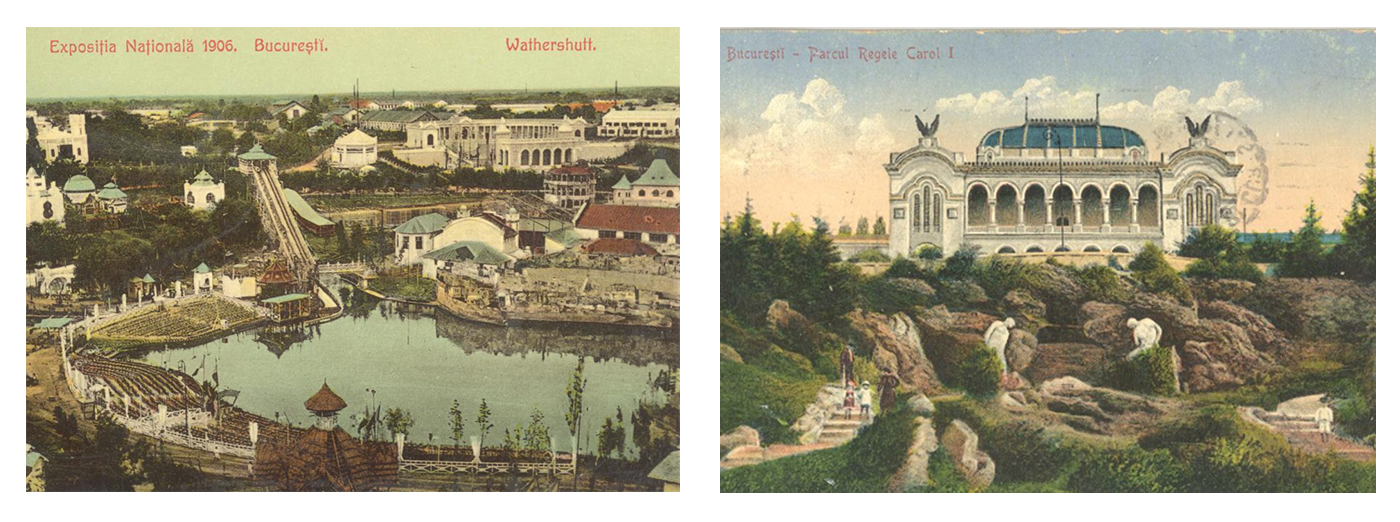
During this period, the architect Suter built for himself, between 1902 and 1906 a small palace on the highest geographical point of the city (the top of Filaret Hill) which would offer a splendid panorama over the city. He arranged and decorated it in the spirit of the time, with the attention and emblematic Swiss carefulness for the durable and refined work but also adding elements of the local Brancovenesc style, in order to honor the culture and the strong values of the country that received him. The palace was inaugurated it in the same time as the Exhibition and hosted the most refined meetings and parties, guests from all over the world, princely figures, nobles or visitors of the exhibition but also the most prestigious personalities of Bucharest. Suter Palace has thus become a famous and appreciated meeting place for the elites of the time and the most refined guests of Little Paris.
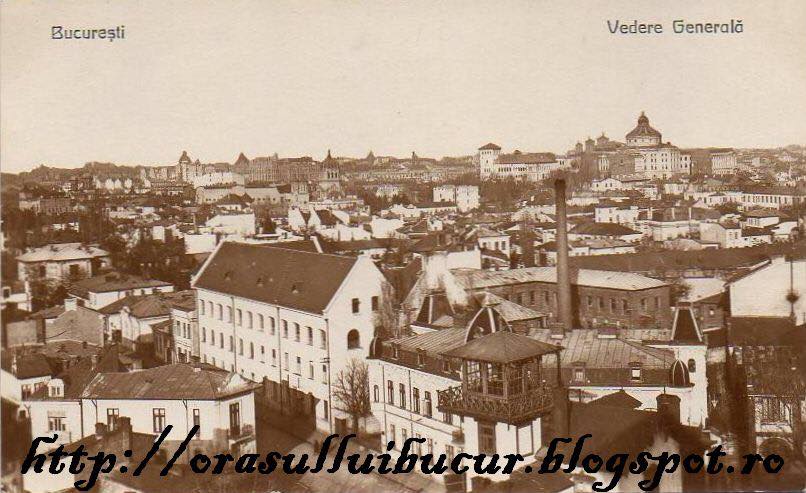
The presence of the palace, the notoriety of the owner, the reputation of its events and its guests, had an important contribution to the development of the whole area. In addition to building his own residence, G. A. Suter will be directly involved in sanitation, subdivision and design the area starting from the alley leading to the palace, to Mahalaua Brostenilor, a place where the Gramont district will be born and developed, thus creating a real Swiss district in the southern part of Bucharest. A collaborator of the Swiss architect, F. Schmidts, designed new and beautiful buildings with Austrian, Swiss and French architecture, bordering the alley leading to the Suter’s palace, in full architectural harmony with the residence.
With the death of The Good King Carol I in 1914 and the loss of his wife, Elise Cremer-Suter in 1916, the architect sells his residence on his return to Switzerland to a Greek banker, who, after 1940, generously gave the little palace as a gift to his French mistress. Subsequently, the residence changed several owners, at the end of the Second War the old statut of the palace is lost until it was nationalized by the communist regime in 1950 and successively became the center of MGB / KGB operations for a short time, the Communist Party headquarters then ICRAL Sector 4 headquarters (Romanian housing administration) until in 1991 when it was claimed by the rightful heirs, being returned in 2001.
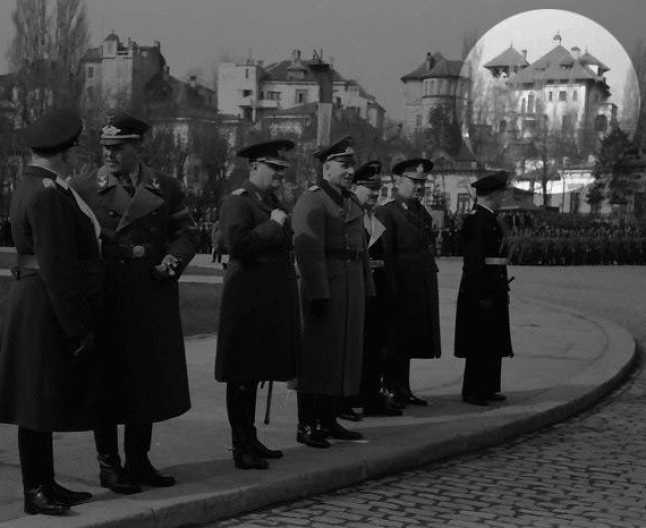

Almost a ruin, in 2003 it was bought by a family of Romanian-German investors who, with incommensurable attention, a 3-year effort and an investment of over 4 million euros, restored and arranged the surrounding spaces. decorated inside the palace with the most precious materials and a team of famous and skilled Romanian, Italian, Austrian and German architects and craftsmen. Returned to the status and appearance of the architectural jewel of Bucharest, Suter Palace was opened in 2007 as a 5-star boutique hotel under the name Carol Parc Hotel, a member of the exclusive Small Luxury Hotels of the World club. At the same time, the palace received the splendid creation of Venetian crystal, the shining heart of today's Suter Palace, its famous chandelier made of over 2000 Murano crystal wand, the longest of its kind in Europe, an original reinterpretation of the sculpture "Endless Column” by the famous Romanian sculptor Constantin Brancusi. The restoration of the Suter Palace was considered and awarded in the year following its opening as "The best restoration and design project in Romania", a title awarded by the Union of Romanian Architects.
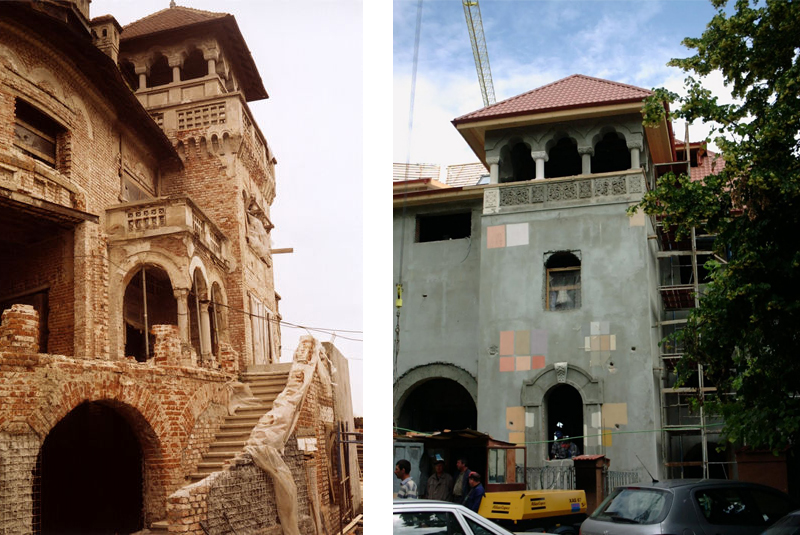
In 2017, the palace was bought by the current owners, a prestigious family of Romanian entrepreneurs who reconsolidated and redecorate the interiors, opening its gates at the end of 2018 with its new identity as SUTER PALACE Heritage Boutique Hotel. In 2019 the hotel received the title of "Best Design Hotel" awarded by Hotel, Spa & Wellness professionals at Gala Termalia
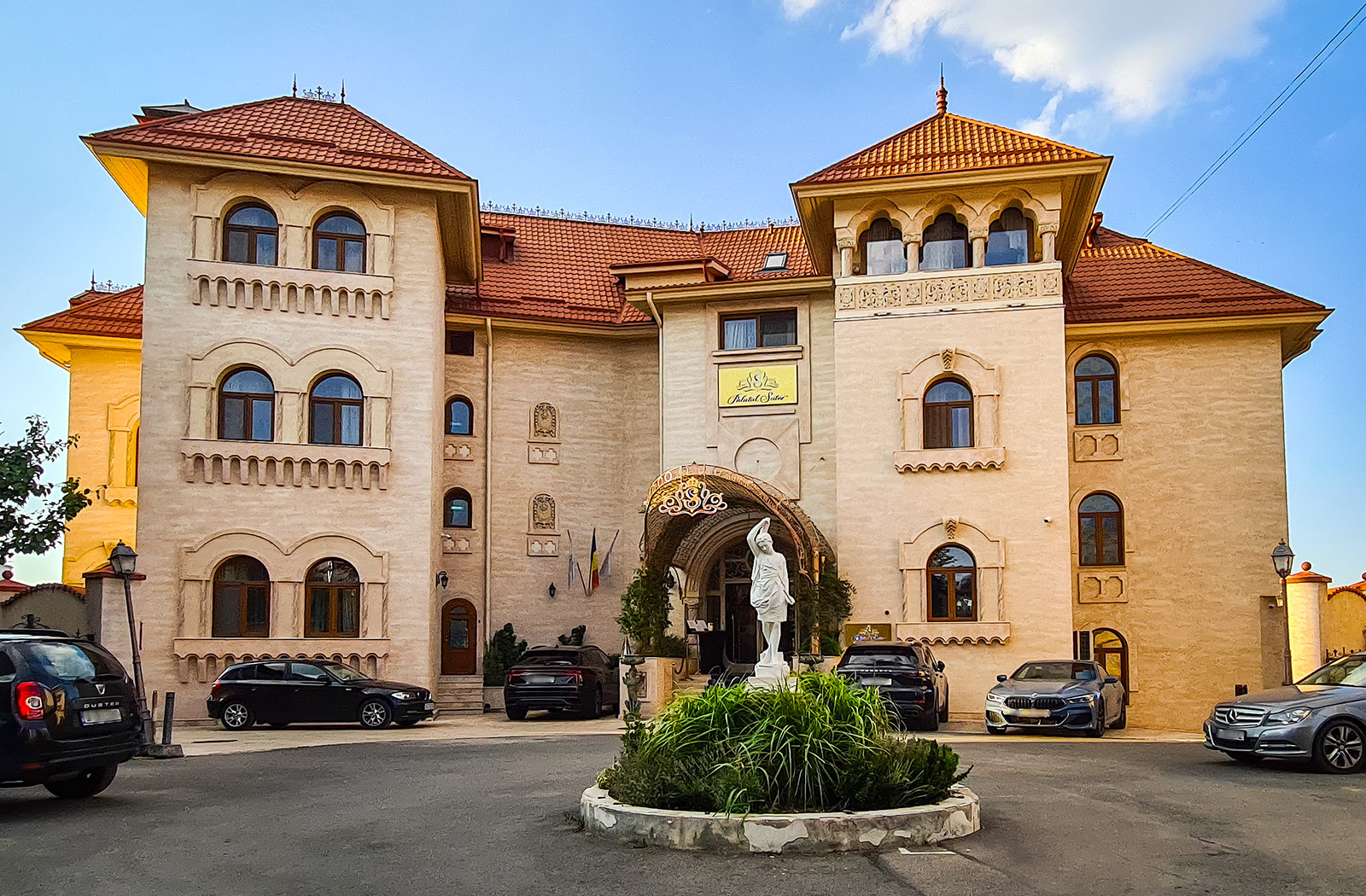
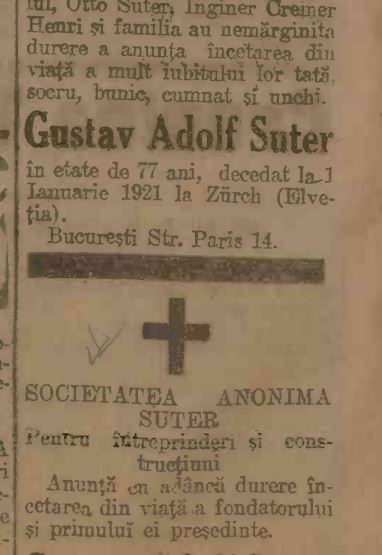 Today, the alley leading to the palace on the top of Filaret Hill and the wonderful building that has regained the status of Pearl of the Crown of princely buildings of Bucharest are named after Adolf Suter. At his death, which occurred on January 1, 1921 in Zurich, the most prestigious newspapers of the time, Universul si Adevarul, bring him a beautiful praise, mentioning that his name is linked to the creation of one of the most elegant, luxurious and clean district of the capital. Also thanks to Gustav Adolf Suter, the Filaret, Colentina and Stefan cel Mare districts were created.
Today, the alley leading to the palace on the top of Filaret Hill and the wonderful building that has regained the status of Pearl of the Crown of princely buildings of Bucharest are named after Adolf Suter. At his death, which occurred on January 1, 1921 in Zurich, the most prestigious newspapers of the time, Universul si Adevarul, bring him a beautiful praise, mentioning that his name is linked to the creation of one of the most elegant, luxurious and clean district of the capital. Also thanks to Gustav Adolf Suter, the Filaret, Colentina and Stefan cel Mare districts were created.
The history of the area before its systematization by AG Suter is equally beautiful and is linked to the name of a Frenchman, who was officer in the Russian army and became an aide-de-camp to the Romanian lords, Viscount Louis Antoine de Grammont.
Viscount Louis Antoine de Grammont
Around the middle of the 19th century, a Russian oficer of German origin, Rudolf Artur von Borroczyn, made a complex plan of Bucharest, consisting of 100 maps. It could be seen that the land that included Filaret Hill, the current Rahova district and the Chalice Bridge (part of the current Regina Maria Boulevard) looked like an area with hills, vineyards and swamps, owned by Viscount Louis Antoine de Grammont.
Descendant of an old French noble family from Haute Saone and an officer in the Russian army, Viscount de Grammont lands in our lands as an aide-de-camp to General Kiseleff - the Russian proconsul who ruled the Romanian principalities between 1829 and 1834.
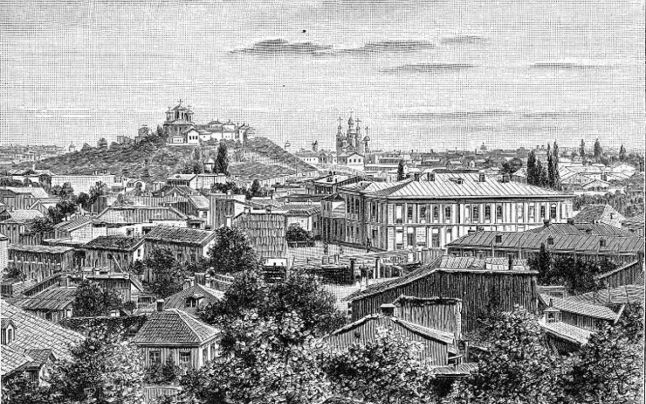
Impressed by his behaviour and his qualities, the new Lord of the Romanians, Alexandru Dimitrie Ghica offers him the position of royal aide, enlisting him in the Romanian army with the rank of colonel. The efficiency that the viscount showed in a sustained way made him keeping his position of royal aide-de-camp both during the reign of Gheorghe Bibescu and of Barbu Stirbei, the latter naturalizing him as Mare Logofat (an old romanian noble title).
The lands already bought together with the dowry of his new wife turn the Viscount de Grammont into the owner of a large and picturesque estate, which included vineyards and groves, fields and streams. He liked to fish, so he enjoyed the lakes and ponds of his estate to the fullest. Towards the end of the 19th century, the viscount has sold part of his vineyards to the Metropolitan Church of Bucharest and at his death, in 1851, his estate it was devided and sold piece by piece by his descendants.

Louis Antoine de Grammont's lands, originally on the outskirts of the capital, were slowly becoming the heart of the growing city, with Bucharest expanding rapidly. At a distance of 40 years, the Swiss architect G. A. Suter, buys Filaret Hill and forms together with some associates the "Suter Joint Stock Company for Enterprises and Constructions" which will be the main company that will improve the whole area. The name of the one who had been the special aide-de-camp of the Romanian lords was kept in the memory of the people and attributed to the neighborhood that grew on the site of the French viscount's property, keeping its name, Gramont, from the 19th century until the 1990s. The main street crossing the property still retains its old location, it has the same name, Gramont, connects today Regina Maria Square with June 11th Street and remembers Viscount Louis Antoine de Grammont’s name forever.








